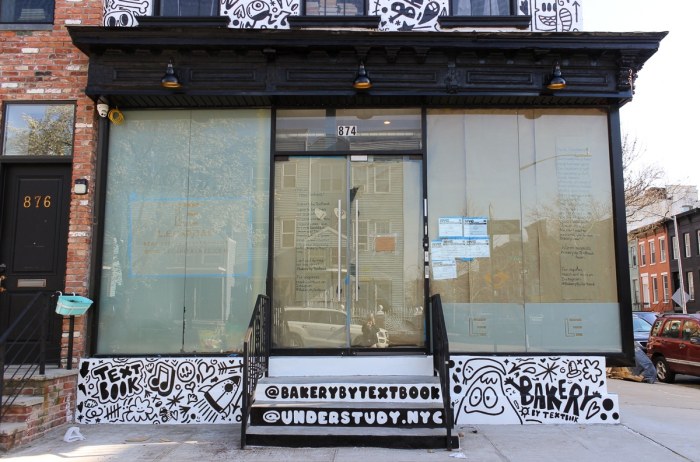
Since opening to the public, the three new stations on the Second Avenue Subway have been mostly filled with a different type of clientele: admirers, not commuters.
Visitors took pictures in front of the new artwork, like Vik Muniz’s mosaics of ordinary New Yorkers. Passersby marveled at the airy size of the platforms, the clean tiles, the glass-encased elevators.
“Everyone’s smiling,” said Russ Solomon, 42, one of the fire marshals tasked with keeping an eye on the 96th street station until mid-January. He said he’d been there for the midnight run on New Year’s Eve, when Gov. Andrew Cuomo led a delegation of dignitaries on a celebratory first ride.
By Monday, the politicians were replaced by families, some of whom Solomon said were riding the three-station extension back and forth, marveling anew at each feature.
“Right now it’s like a museum,” he said.
But as New Yorkers return to work after New Year’s Day, the museum becomes a workhorse.
Finally here
New Yorkers are cheering more than just the pretty mosaics and the (momentarily) clean digs.
The new Q stops should coax riders off the nearby Lexington 4-5-6 line, one of the busiest subway lines in the nation. Transit enthusiasts and regular New Yorkers at the new stations on Monday expounded giddily about simple transfers between the F and Q at 63rd — making Queens more accessible and offering relatively painless rides from the Upper East Side to Coney Island or Prospect Park.
“There’s repercussions for a lot of different folks,” says Richard Barone, vice president for transportation at the Regional Plan Association, which has been a champion of the project. Barone singled out access to hospitals on the Upper East Side and residual benefits for those who take the 6 in the Bronx, who may experience fewer delays if the Lexington line is freed up.
The biggest cheerleader of them all, of course, has been Cuomo, who as governor largely controls the MTA. In the weeks leading up to deadline, Cuomo was more omnipresent than a good “showtime” dance crew.
He gave tours to reporters and inspected the work. He lauded the extension as “extraordinary” and “unlike any subway station you’ve ever seen”; but also “on-time and on budget,” a selective way of looking at the $4.5 billion project that has had multiple ground breakings, deadlines and price-tags over nearly a century.
There’s reason for self-congratulation, but the New Year’s Eve celebration was for merely three out of an anticipated 16 stations. Thirteen additional stops are expected in the next three phases of the line, extending from East Harlem down to Hanover Square. As of now, the extension has only reached the tony seventies to nineties. So far, $1.5 billion has been allocated for Phase 2, of a projected $6 billion cost.
Aspiring to be more than a subway station
Among the centerpieces of the new stations are massive beams that include messages for riders going up or down the (already sometimes broken) escalators: “Excelsior,” the state motto on one side; and “E Pluribus Unum” on the other.
It is pretty grand to tie a three-station extension to the project of American democracy.
But Cuomo doubled down on the dual mottos in his New Year’s Eve station-opening speech. He said the state motto is an exhortation to dream big — and that the new subway does just that: “Government works and we can still do big things and great things and we can still get them done.”
As for the unofficial national motto on the other side, Cuomo said it stood for the diversity that New York and America has long celebrated. “I feel in a lot of ways this country, this year, is going through a period of soul searching,” Cuomo said, adding that the country is “looking for its moorings.”
In language that seemed directed at Donald Trump, he said that New York is the “epitome” of demonstrating that “out of people from all over the globe, we would form one community.”
In New York City, the subway system is the ideal example of the melting pot. Celebrating that tradition, and its expansion, is a muscular argument wrought in concrete for Cuomo, who has been honing a reputation as a major builder in a state that has launched many presidential ambitions.
But to bring those inscriptions to life, state and federal government must keep the momentum going and finish the line first proposed during the Roaring Twenties. Talk is good; funding will give it meat. Because soon, the beautiful new stations will be crowded and mundane.
Maldonado Isidoro, 59, who normally works as a station agent at Franklin Avenue, chose to work overtime to greet and guide visitors on Monday at the tail end of the Second Avenue line’s honeymoon period.
He pleasantly handed out information pamphlets, directed people towards the works of art. Visitors kept coming, and he had plenty to do, but it would be on a different scale soon.
“You think this is people? This isn’t people. Wait until tomorrow,” he said.

















